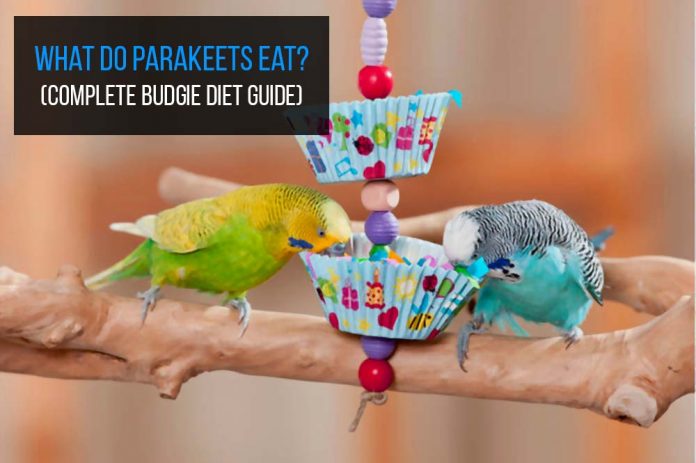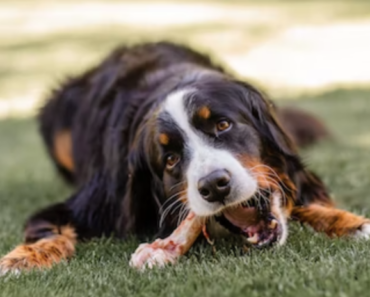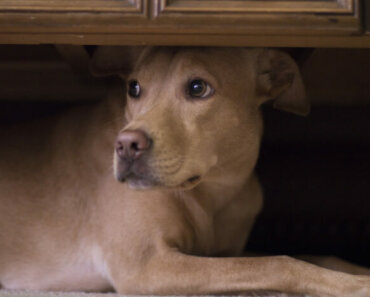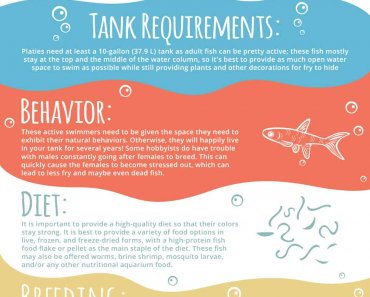Parakeets are small, tropical parrots with a taste for variance. What do parakeets or budgies eat in the wild? A wild parakeet’s diet can vary considerably. Usually it contains whatever fruits, vegetables, nuts and seeds they can get their beaks on. Sometimes they might stumble upon another bird’s eggs and eat those. Their hooked bills are great at getting into almost anything!
What do parakeets or budgies eat in captivity? Fresh fruits and veggies are important. Parakeets need a varied but balanced diet, and plenty of water. Dehydration can be a killer, so ensure a constant supply of clean water. You might think regular birdseed will be enough, but these highly intelligent birds need more than that!
Your domesticated parakeet needs just as much variation in diet as it would get in the wild. Instead of giving your parakeet regular birdseed, why not splash out on a seed mix that is specifically designed for parakeets? Parakeets are intelligent, and their proportionally large brains require more nutrition than many other birds. Specialized seed mixes often contain dried fruit and higher levels of calcium. If your parakeet doesn’t get enough calcium in its diet, it can quickly become unwell.
Jazz up your parakeet’s diet with small pieces of fresh raw fruits and vegetables. A variety of nuts, seeds and fruits will ensure a broad nutritional cross-section, and will help maintain a healthy, happy parakeet. Variety is the spice of life, for humans and parakeets alike!
Birdseed provides basic sustenance, but it should only form a sixth of your parakeet’s overall diet. Why is that? It is because birdseed alone does not contain all the nutrients your parakeet needs to live a healthy and happy life. Specialized birdseed is better, but there is no match for fresh fruit and vegetables. Too much birdseed could lead to obesity, cancer, or other health problems.
Build the rest of your parakeet’s diet from a combination of fresh fruits and vegetables (dark green or yellow ones, mostly), dried fruits, boiled eggs, shredded cheese, and other mineral-rich consumables such as cuttlebones or mineral blocks.
Here’s what you’ll learn in this guide:
If you have any questions when you’re done reading, feel free to ask them in the comments section below. Alternatively, there are other online sources of information. Also, if there’s anything you’d like to add to our list, please let us know!
What vegetables can parakeets eat?
Most vegetables have excellent nutrient profiles, including vitamin A, which is important for parakeets. Parakeets are evolutionarily accustomed to eating a range of fresh vegetables. So, the more fresh vegetables you can include in your parakeet’s diet, the better.
It is not recommended to precook the vegetables before feeding them to your parakeet. Besides, this denatures many of the nutrients and enzymes your parakeet needs to be super healthy.
It is also not advised to feed canned vegetables to your parakeet, as they often contain preservatives, which could be toxic. Canned vegetables are also often soaked in brine, sugar or something else. High levels of salt and/or sugar detract from the nutritional profile of the vegetables, and can lead to an unhealthy gut.
Here is a non-exhaustive list of vegetables you can feed to your parakeet:
- Spinach
- Squash
- Broccoli
- Carrots
- Cabbage
- Pumpkin
- Sweet potato
- Parsley
- Cilantro
- Asparagus
- Kale
- Romaine lettuce
- Sprouted seeds
- Dandelion leaves
And that’s not all! The sky really is the limit. Vegetables can be fed daily, or every other day. They can easily make up a third, or even two thirds of your parakeet’s diet, since there are so many options available.
Again, make sure the food you give your parakeet is raw. Cooking can denature some of the minerals they require. Other than that, variety is the spice of life. Mix it up!
What fruits can parakeets eat?
Most fruits make excellent sustenance food for your pet parakeet. They are high in a broad range of vitamins, and are packed full of antioxidants. Include fresh fruit in your parakeet’s diet every other day – this could be a nibble from an apple, or a few pieces of banana. See the list below for more ideas.
Make sure to remove all pips, pits or large seeds from fresh fruit before you give it to your parakeet. These can be surprisingly damaging to your parakeet’s health. This is most applicable with fruits like apples and pears, which have prominent pips. You don’t need to painstakingly remove every strawberry seed from the skin.
Different fruits have different nutritional profiles. Here is a list of fresh fruits you can feed your parakeet, divided into the nutrients they maximize on:
Fruits that are especially high in vitamin A:
- Grapefruit
- Mango
- Papaya
- Cantaloupe melon
Fruits that are rich in potassium:
- Banana
- Honeydew melon
- Apricot
- Plum
- Peach
- Nectarine
Fruits that have a high vitamin C content:
- Oranges
- Kiwi
- Pineapple
- Clementines
- Satsumas
- Tangerines
- Redcurrants
- Blackcurrants
Fruits that are high in antioxidants
- Blueberry
- Blackberry
- Strawberry (in small doses)
Fresh or dried coconut can also be added to your parakeet’s diet, and grapes are great snacks too.
Also within the realm of fruits are dried fruits. Raisins, sultanas, dried cranberries and chopped dates can provide a wealth of extra nutrients. Be aware that they are often very sweet, so they should be considered an add-on, not primary sustenance.
Did you know? Dark fruits such as blueberries and blackberries can stain your parakeet’s droppings. But don’t worry, this is not a cause for concern!
What types of seeds can you feed your pet parakeets
Seeds should make up 10-20% of your parakeet’s diet. Many seeds are high in fat, so they should be eaten in moderation.
But within that 10% – 20%, the world is your oyster! There are so many types of healthy seeds out there; it’s hard to count them all. Basically any seeds that are healthy for humans are healthy for parakeets. Note that apple seeds are NOT healthy foods for parakeets (but they’re not particularly good for humans, either).
You can include seeds from your kitchen in your parakeet’s diet. These can include:
- Pumpkin seeds
- Sunflower seeds
- Chia seeds
- Sesame seeds
Be careful though, because some seeds, especially sunflower seeds, have a high fat content. Limit your parakeet to, say, a dozen sunflower seeds (or pumpkin seeds) a day to avoid clogged arteries. Also, packs of seeds you get at the supermarket are often salted or flavored. Don’t feed these to your parakeet.
You can also buy commercial seed mixes – generic birdseed as well as specially mixed parakeet seed mix. Some seed mixes now contain a proportion of pellets. Many seed mix manufacturers produce mixes for specific bird breeds. Be warned though: cheaper mixes are often bulked up with sunflower seeds, which should be eaten only in moderation.
Here are some seed mixes specially designed for parakeets, which you can consider bringing into your pet’s diet. They are all similarly priced, but have slightly different proportions.
- Higgins Vita Seed Parakeet Food – naturally preserved, probiotic, and contains omega 3 and additional vitamins and minerals.
- Hagen Budgie Seed – slightly cheaper than many competitors, and dust-free!
- ZuPreem Sensible Seed Small Bird Food – contains dried fruits and vegetables, as well as pellets and seeds.
What types of nuts can you feed your pet parakeets?
Nuts and seeds are similar in many ways. Much of the advice for seeds is also relevant to nuts.
- Avoid salted, spiced or otherwise flavored nut mixes from supermarkets
- Avoid cooked nuts
- Avoid choking hazards by chopping large nuts
- Wash or peel nuts to make it easier for your parakeet to eat them
Otherwise, nuts are a great addition to your parakeet’s diet, when added in moderation. They are a fantastic source of protein, but often contain a very large amount of fat. Here are a few nuts you might want to consider feeding your parakeet:
- Almonds
- Cashews
- Pistachios
- Pecans
- Macadamias
Important note: While it may seem like all nuts are good nuts, do NOT feed peanuts to your parakeet. Eating too many peanuts can cause ill health very quickly.
If your parakeet is struggling to eat whole nuts, feel free to crush them up and sprinkle them in their food.
Can parakeets eat pellets?
Pellets typically provide more essential nutrients that your parakeet won’t get from seeds or nuts alone. For this reason, they can be used as the main part of your parakeet’s diet. Fruits, vegetables, nuts and seeds can then be added to supplement a principle diet of pellets.
The issue is that parakeets are not used to eating pellets. If you start by feeding a half and half mix, your parakeet will likely just eat around the pellets. For this reason, it is recommended that you provide a stock of pellets in a pellet dispenser for your parakeet to eat throughout the day. This way, they will get used to eating pellets when hungry. Parakeets need to eat frequently to fuel their high metabolic rates, so a steady stream of pellets will make sure your parakeet never goes hungry.
Here are a few pellet mixes you might want to consider:
- Mazuri Small Bird Food – no artificial colors or flavors, and packed full of nutrition! This brand also claims to be more easily digestible than other pellets.
- Kaytee Fiesta For Parakeets – contains a mix of nuts, fruits, vegetables and vitamins that keep your parakeet’s skin and feathers healthy and vibrant.
- ZuPreem Natural for Small Birds – also contains no artificial colors or flavors. Furthermore, these pellets are smaller and easier to digest than some others, so might be a good mix to start on when your parakeet is still young.
What other food can I give my parakeet as a treat?
OK, so we’ve covered the basics, and then some. You know about what sorts of seeds, pellets, vegetables and fruits you should and should not feed your parakeet. You also know why some are better than others, and which should be fed only in moderation.
What about treat time? Just like humans, parakeets like a treat every now and then. How should you supplement your parakeet’s diet to make it extra happy?
There are a bunch of foods parakeets like to eat on top of their regular diets. One of the most common treats is flavored seed sticks. These might not seem exciting to you, but for a parakeet these can be the tastiest things in the world.
Seed sticks hang from the cage and provide entertainment as well as nutrition. The parakeet has to peck and maneuver the seed stick in order to get seeds off it. These edible toys are available at most pet stores, or can be found online.
Other treats you can feed your parakeet include:
- Bread, toast and whole grain pasta
- Parakeets can eat whole grains, and will benefit from them, in moderation – they tend to be fattening. Cut these up into small pieces and see how your parakeet takes to them.
- Eggs, crushed egg shells or smashed oyster shells
- These are all great sources of protein for your parakeet.
- Cheese
- Peanut butter – in small quantities, smeared onto (for example) celery or carrot sticks in bite-size pieces.
- Baby food
These are just some ideas. All parakeets are different, and have different tastes. Try your pet parakeet on a range of these, and see how they react. Good luck!
Important note: Do not feed anything to your parakeet that has been in your mouth. Birds often feed their young from their mouths, but this is OK because they share a gene pool, and a germ pool. Your immune system and bacterial microsystem are vastly different to a parakeet’s. As a result, bacteria from your mouth could be toxic to your pet parakeet.
What food is toxic to budgies or parakeets?
It is really important to know what NOT to feed your parakeet, as well. Otherwise, you might experiment with a new food, only to find that it makes your parakeet very ill. Here is a list of foods known to be harmful (especially in large quantities) to parakeets.
- Caffeinated foods (such as coffee beans or coffee-flavored processed foods, as well as tea)
- Chocolate (including dark chocolate)
- Avocado – this fruit contains Persin, which is poisonous to parakeets, and should be avoided at all costs
- Peanuts
- Apple seeds
- Garlic
- Onion
- Artificial sweeteners, such as xylitol or aspartame – these are usually found in processed sweet foods, and canned soda
- Anything alcoholic (this should go without saying)
Some of the above, like peanuts, are OK in moderation. The problem is that most peanuts available in supermarkets are extremely salty, or flavored with chili powder and other artificial flavorings. Some even have fatty crunchy coatings, which are very unhealthy.
As you can see by this list, things that you consider normal treats may be deadly for your parakeet. What is the best advice? Check before introducing anything new to your parakeet’s diet. That way, you can be sure that it is not toxic before you feed it to your pet.
Feeding frequency: How long can budgies go without food?
Parakeets have exceptionally fast metabolisms. You might think that, because other domestic animals can go a few days and still recover, parakeets can do the same. This is not true! Parakeets are small, quick and flighty. They have a very active metabolism. As a result, they can easily become ill after just 24 hours of not eating. After 2 or 3 days, your parakeet may not survive.
How long do parakeets live without water?
With water, it is very similar. A parakeet can last a day or two without water, but just because it can doesn’t mean it should. Make sure your parakeet’s water supply does not run out for more than a day, if you want to keep it healthy!
Here is a sketched, basic feeding schedule that you might want to start with:
- Everyday foods: some sort of seed/pellet mix
- Every other day foods (or every day): fruits, vegetables and other soft foods
- Once a week foods: boiled eggs, shredded cheese, and any other treats
You don’t have to follow this outline rigidly, but hopefully it will give you an idea of how to go about feeding your pet parakeet.
How to feed? Step by step guide
Parakeets are idiosyncratic, and all have different tastes and habits. Experiment with different types of foods, and different schedules, to find out what your parakeet likes best.
Here are some guidelines:
- Keep a steady flow of pellets in a dispenser available for your parakeet to snack on throughout the day.
- Feed extra bits once or twice per day, in small quantities.
- Keep food bite-size – chop nuts down to size, and slice fruits and vegetables before feeding them. Parakeets weigh on average 1 ounce, so they cannot have big pieces of hard food.
- Find out what your parakeet likes by providing a variety. See what they eat an what they leave. Easy!
- Remove uneaten food at the end of each day to keep the area hygienic and clean.
- Change your parakeet’s water daily too, to keep it fresh and sanitary.
- Mix things up, day by day, to avoid your parakeet getting bored.
- Parakeets like warm fruit, so consider using a microwave for a few seconds before feeding it.
- Do NOT feed hot food to your parakeet, as their heat tolerance is very low.
If you want to do some interactive eating, or ‘play-eating’, here are two things you can try…
- Dip your finger in water and then in seeds and encourage your parakeet to eat the seeds from your finger.
- Hold your parakeet in one hand and a larger piece of food (like a banana) in the other, and let them nibble and peck at the food.
If you do choose to give your parakeet a cuttlebone or mineral block, simply fasten it to the inside of the cage with the soft side facing your bird.
Conclusion
Parakeets are wonderful birds. They are colorful, intelligent and make great pets. Their quizzical, curious nature makes them the perfect domestic companions. And they enjoy each other’s company, too.
Do you have any more tips or pointers? Our readers are always happy to read about any ideas you have. Whether it’s something we missed or a trick you’ve learned over the years, share it in the comments below!
As always, feel free to share this guide with anyone who loves parakeets, parrots or birds. Happy bird keeping!



























